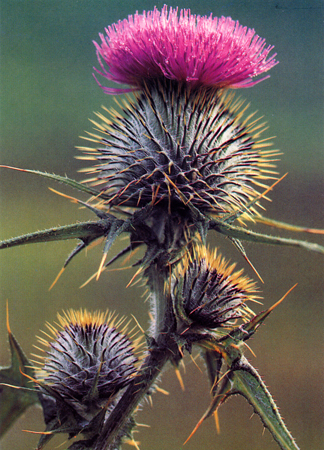

 |
|
Scottish Thistle the National Flower of Scotland
|
||
|
FREQUENTLY ASKED QUESTIONS ABOUT ORMISTON TARTANS |

|
What is a tartan?
What is a plaid?
What are cheques?
Do you mean to tell me that they aren't all the same thing? |
||

|
Who is entitled to wear a tartan?
Wearing a tartan is more a matter of good taste than of entitlement. |
||

|
Why do some tartans have so many different color effects?
Modern, ancient, muted, weathered, reproduction, dress, and hunting |
||

|
What are the origins and history of tartans?
Identification and independence, royal decree, and Sir Walter Scott's revival |

|
See examples of the
Roxburgh District Tartans These are the most popular tartans for members of the Ormiston family. Many varieties and color combinations of the Roxburgh Red Tartan exist. The Roxburgh Green Tartan is out of production and very challenging to locate. Weaver's thread counts are provided for special orders and creative projects. |
||

|
See several examples of
National or Universal Tartans At least a dozen national or universal tartans are in general use. Some are very new and some of these date from before 1850. Popular with families who have no affiliation with a clan or district. |
||

|
See an example of the
Cockburn Clan Tartan The "Cockburn of Ormiston" tartan is affiliated with the Cockburn family, who owned land in Clerkington, Langston and Ormiston. This tartan is not affiliated with the family of Ormiston. |

|
Why is the
thistle a Scottish national symbol? An early warning system foils an attack on Scotland in the thirteenth century. |

|
Return to ORMISTON HOME page |
